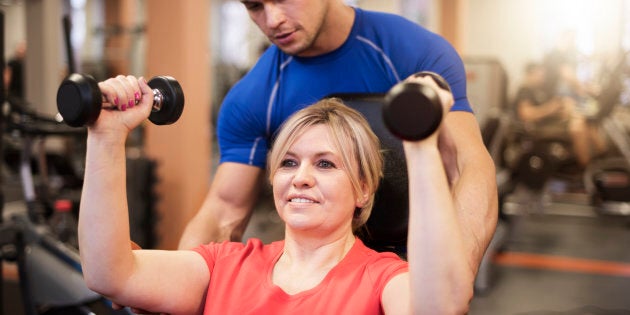
Gone are the days of lying immobilized on the couch, wasting away your summer waiting for that pesky sprained ankle to heal itself. The previously prescribed approach to healing injuries known as R.I.C.E, (rest, ice, compression, elevation) has now widely been replaced by M.I.C.E (movement, ice, compression, elevation). Sounds simple enough, but the question is: how much movement and what kind?
Depending on factors such as your level of physical activity before the injury, your mindset and personality, and of course the nature and degree of severity of the injury, you may find yourself over-exercising and pushing through the pain or becoming far too sedentary and inactive.
There are serious setbacks caused by both extreme reactions to an injury. Pushing through pain will only exacerbate the injury, prolong healing time and risk further or alternate injury as your body will create compensation patterns that compromise other muscles and joints. Calling it quits at the gym is not necessarily any better. Stopping all exercise will inhibit blood flow to the injured area, which is necessary for tissues repair, as well as causing you to lose muscle strength and mobility.
Here are three key principles to help you make gains as you recover from your injury. When these are put into practice you can heal faster, get even stronger and avoid future injury.

Work in a pain-free range of motion
Your best mental approach to exercising while you are injured is to think about how you can move smartly. Shifting your mindset from the biggest most powerful movements you can make to thinking about the most effective way you can move will keep your body strong and mobile: this, and only this, is what will give you gains. As soon as you can move without hurting yourself, (like sitting down in a chair or walking into a studio) you can start to exercise again, making sure to:
Make your movements smaller and stay in a pain-free range
Start by using little to no resistance
Modify your workout so it is easier and less taxing on your whole body
Do fewer reps
Train the rest of your body
Even though your focus will be honed-in on your injury, the best thing you can do right away is to establish a workout routine for your entire body. If movement in your lower body is limited, think about what you can do with your core and upper body. Remember that your injury exists within a whole body, so think about how you can train your entire body to support the injured area. Exercising in this way will keep you in the "exercise zone," which is very motivating, and will also minimize the effects of compensation patterns that occur due to injury. Making sure you lay down the right movement patterning (walking, jogging, running, lifting etc... with proper alignment from head to toe) helps build balanced strength everywhere. This sets a firm foundation to address the actual injured area and will help create the right paced trajectory of healing for your body, giving you huge gains, both physically and mentally.
Create realistic expectations and celebrate small wins
Your mental approach to your injury will determine your physical reality. As hard as it may be to accept, you can expect it to take up to a year for a full recovery from any injury. Yes, in some cases it might be more like eight-12 weeks, but expect to give yourself a year so you can avoid feeling defeated and depressed when it takes longer than you expect.
It is easy to become focused on the injury and in particular on the pain, to focus on what you cannot do versus what you still can do. Try to keep stock of the entire range of your experience and pay attention to the good days as well as the bad days. What does a good day feel like? What does a bad day feel like? What about the in-between days? Focus on what makes you feel better and what you can do. Look for the small wins to keep you motivated. Maybe you are a little less tired today, or can walk up the stairs twice as opposed to only once; maybe you have more of an appetite today or slept for one more hour last night. We don't often pay attention to the small wins, but that is how you will stay motivated and positive as you recover.
Also on HuffPost: